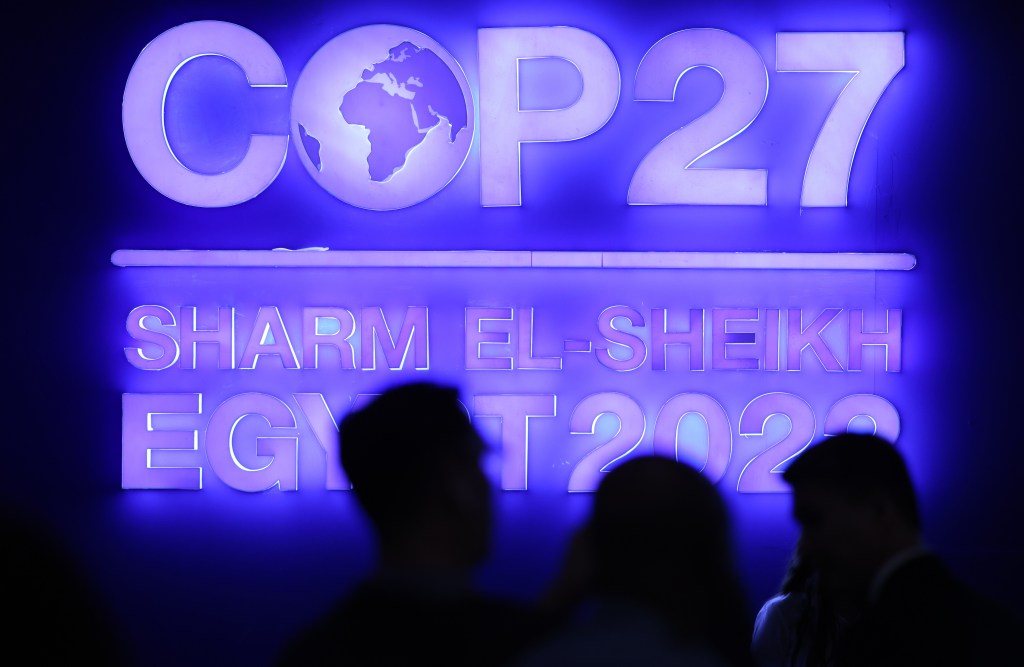COP27 in Egypt represents a significant opportunity to accelerate climate action.

This month’s 2022 United Nations Climate Change Conference (COP27) in Egypt represents a significant opportunity to accelerate climate action.
It is already being dubbed the ‘implementation COP’ by Egyptian President Abdel Fattah El-Sisi. In his welcome message, El-Sisi said the host nation “will spare no effort to ensure that COP27 becomes the moment when the world moved from negotiation to implementation and where words were translated to actions”.
We are seeing some positive developments in Australia, including the federal government legislating an emissions reduction target of 43 per cent by 2030 and Queensland investing $4.5 billion in its Renewable Energy and Hydrogen Jobs Fund.
In addition, three-quarters of large Aussie organisations have pledged to reach net zero by 2050. However, Microsoft-supported research reveals these promises may not be achieved. In fact, a third of private organisations expect to miss their emissions targets.
There are three key reasons why:
- A shortage of skills: 43% of these Australian businesses lack the in-house skills to implement their sustainability strategies.
- Lack of access to technology: 35% don’t have access to the technology they need to implement their sustainability strategies. While 80% of Aussie business leaders believe that technological innovation is key to achieving net zero, just 50% are investing in research and development for technologies that will improve the sustainability of their products, services and operations.
- Limited insight: only 50% of organisations are investing in the tools that will enable them to measure their carbon emissions, and only 11% are mapping emissions.
This is a good example of the ‘delivery deficit’ that’s driving the gap between sustainability pledges and progress. So how do we bridge it?
Three ways to move from pledges to progress
At Microsoft, we see the shift from pledges to progress through three lenses: reducing our own emissions and advancing our progress towards our sustainability goals, providing our customers and partners with the digital technology they need to advance their sustainability journeys, and supporting the societal infrastructure needed for a sustainable world.
We believe people and technology are key to accelerating the journey to net zero in all three areas. People are crucial to driving the clarity of an organisation’s pledge and its commitment to progress. And technology is a great accelerator in moving towards net zero, empowering people and organisations to achieve more.
Microsoft’s sustainability journey is not new. We made our first commitment over a decade ago – and increased our commitments in 2020 – because we believe that those who have the ability to do more should do more.
Since then, tackling climate change has galvanised the entire organisation and transformed our technology. All of which is helping us to reach our goals to:
Transparency is key
We know that our progress towards a more sustainable future won’t always be linear, so another one of Microsoft’s key principles is transparency. We’re committed to not only sharing lessons from our steps forward reducing emissions, but also our steps back.
For example, we’ve seen the use of our devices and cloud services rise due to the unexpected impact of the COVID-19 pandemic and rise of remote working. This has driven up our total Scope 3 emissions – comprising our entire value chain – by about 23 per cent year on year. We’re firmly focused on limiting these emissions in our value chain, but it serves as an important reminder that Scope 3 emissions are difficult to control.
As for our steps forward, we are continuing to invest in emissions reduction for today and the tech needs for tomorrow through our four-year US$1 billion Climate Innovation Fund. One way that Microsoft has used this funding in the last year is by investing in the removal of 1.4 million metric tons of carbon from the atmosphere – the largest such purchase ever.
In addition to our Climate Innovation Fund, Microsoft recently partnered with sustainable electricity retailer Ecotricity to ensure our new data centre region in New Zealand is powered by 100 per cent carbon-free energy when it launches.
Empowering our customers and society
The work we’re doing at Microsoft to reduce emissions also extends to the work that we do with our customers. We’re committed to building innovative technology solutions to help others measure their environmental impact and solve sustainability challenges.
The Arnott’s Group, for example, views sustainability as a business imperative and wants to advance its sustainability agenda by using data more effectively. The iconic brand is deploying Microsoft Sustainability Manager to gain greater visibility of its emissions activities and reliably report its impact and progress in near real time.
We’re also committed to supporting the growth of societal infrastructure needed for a sustainable world. An example of this is Microsoft’s new partnership with Planet Labs PBC and The Nature Conservancy. Together, we will soon launch the Global Renewables Watch, a first-of-its-kind living atlas that maps renewable energy installations from space using AI and satellite imagery.
The journey towards net zero is a shared one. By combining the power of people plus technology, I’m confident we can rise together to meet the increasingly urgent need for climate action and turn our sustainability pledges into measurable progress.
Brett Shoemaker is Chief Sustainability Officer, Microsoft Australia and New Zealand